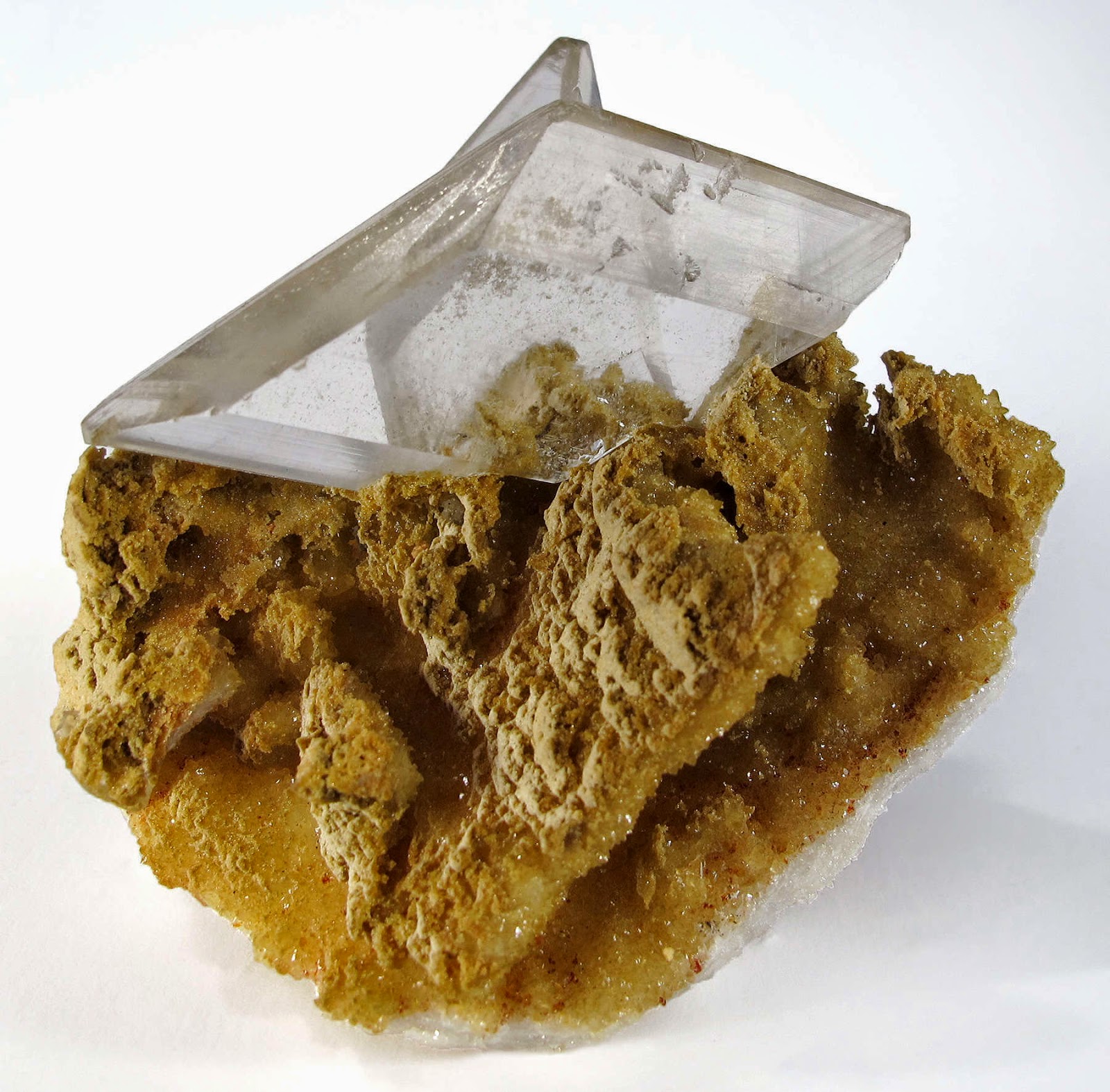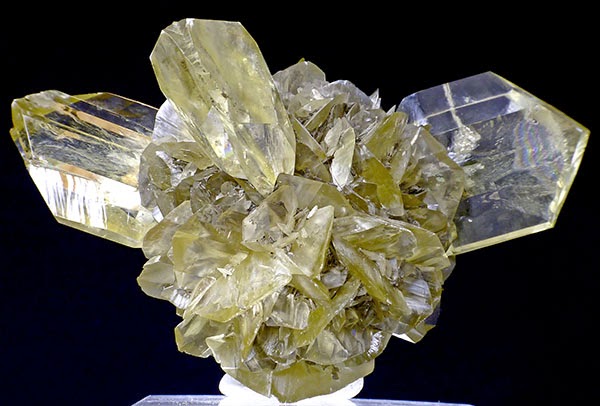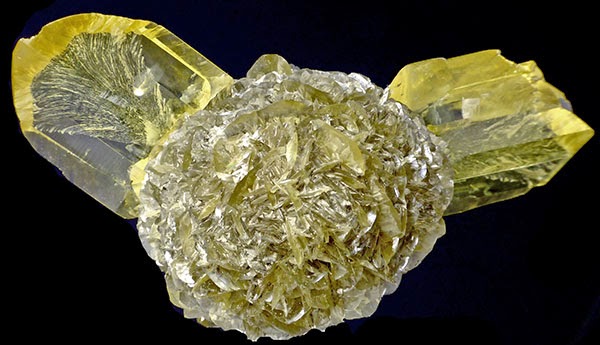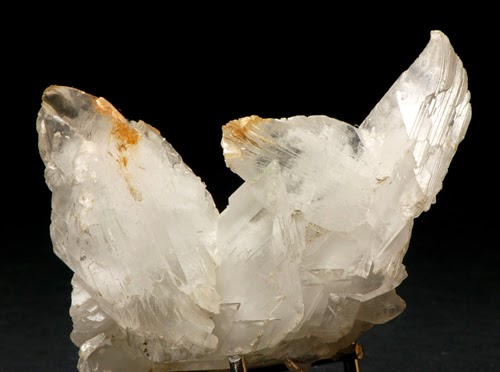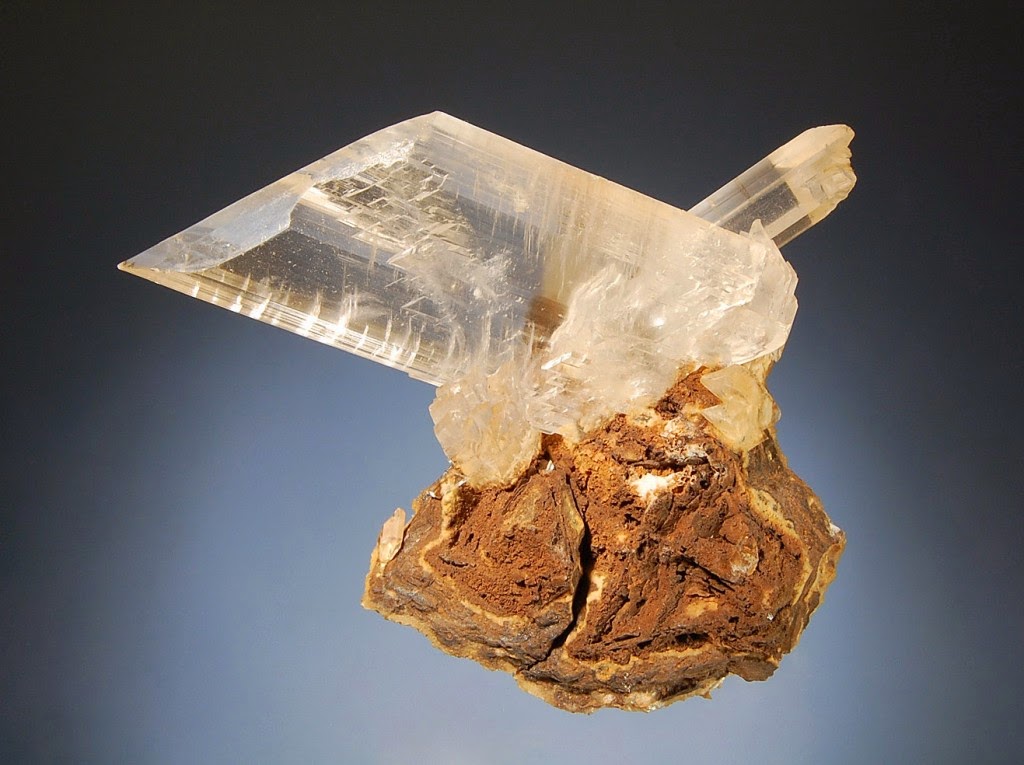
Chemical Formula: CaSO4·2H2O
Locality: Numerous localities worldwide. Naica, Chihuahua, Mexico.
Name Origin: From the Greek, gyps meaning “burned” mineral. Selenite from the Greek in allusion to its pearly luster (moon light) on cleavage fragments.
Gypsum is a soft sulfate mineral composed of calcium sulfate dihydrate, with the chemical formula CaSO4·2H2O. It can be used as a fertilizer, is the main constituent in many forms of plaster and is widely mined. A massive fine-grained white or lightly tinted variety of gypsum, called alabaster, has been used for sculpture by many cultures including Ancient Egypt, Mesopotamia, Ancient Rome, Byzantine empire and the Nottingham alabasters of medieval England. It is the definition of a hardness of 2 on the Mohs scale of mineral hardness. It forms as an evaporite mineral and as a hydration product of anhydrite.
Physical Properties
Cleavage: {010} Perfect, {100} Distinct, {011} Distinct
Color: White, Colorless, Yellowish white, Greenish white, Brown.
Density: 2.3
Diaphaneity: Transparent to translucent
Fracture: Fibrous – Thin, elongated fractures produced by crystal forms or intersecting cleavages (e.g. asbestos).
Hardness: 2 – Gypsum
Luminescence: Fluorescent and phosphorescent, Short UV=orange yellow, Long UV=orange yellow.
Luster: Pearly
Streak: white
Photos :
